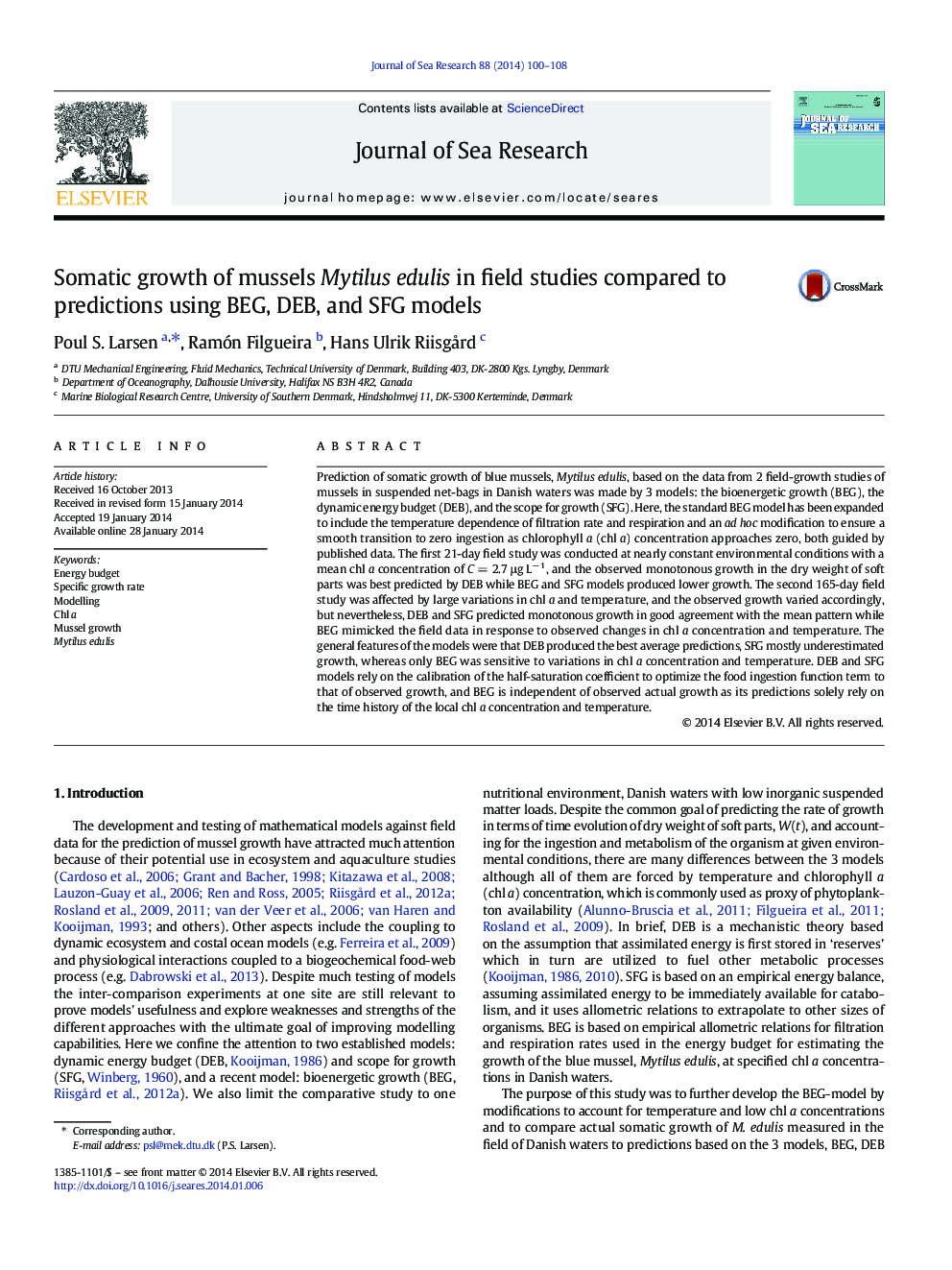| Article ID | Journal | Published Year | Pages | File Type |
|---|---|---|---|---|
| 6387342 | Journal of Sea Research | 2014 | 9 Pages |
â¢For growth in near constant environment models perform similarly, DEB being the best.â¢For growth during significant changes in chl a and temperature the 3 predictions vary.â¢DEB and SFG, tuned to actual data, show monotonous growth in agreement with the mean.â¢New BEG, modified for low-C and low-T, needs no tuning and mimics data quite well.
Prediction of somatic growth of blue mussels, Mytilus edulis, based on the data from 2 field-growth studies of mussels in suspended net-bags in Danish waters was made by 3 models: the bioenergetic growth (BEG), the dynamic energy budget (DEB), and the scope for growth (SFG). Here, the standard BEG model has been expanded to include the temperature dependence of filtration rate and respiration and an ad hoc modification to ensure a smooth transition to zero ingestion as chlorophyll a (chl a) concentration approaches zero, both guided by published data. The first 21-day field study was conducted at nearly constant environmental conditions with a mean chl a concentration of C = 2.7 μg Lâ 1, and the observed monotonous growth in the dry weight of soft parts was best predicted by DEB while BEG and SFG models produced lower growth. The second 165-day field study was affected by large variations in chl a and temperature, and the observed growth varied accordingly, but nevertheless, DEB and SFG predicted monotonous growth in good agreement with the mean pattern while BEG mimicked the field data in response to observed changes in chl a concentration and temperature. The general features of the models were that DEB produced the best average predictions, SFG mostly underestimated growth, whereas only BEG was sensitive to variations in chl a concentration and temperature. DEB and SFG models rely on the calibration of the half-saturation coefficient to optimize the food ingestion function term to that of observed growth, and BEG is independent of observed actual growth as its predictions solely rely on the time history of the local chl a concentration and temperature.
